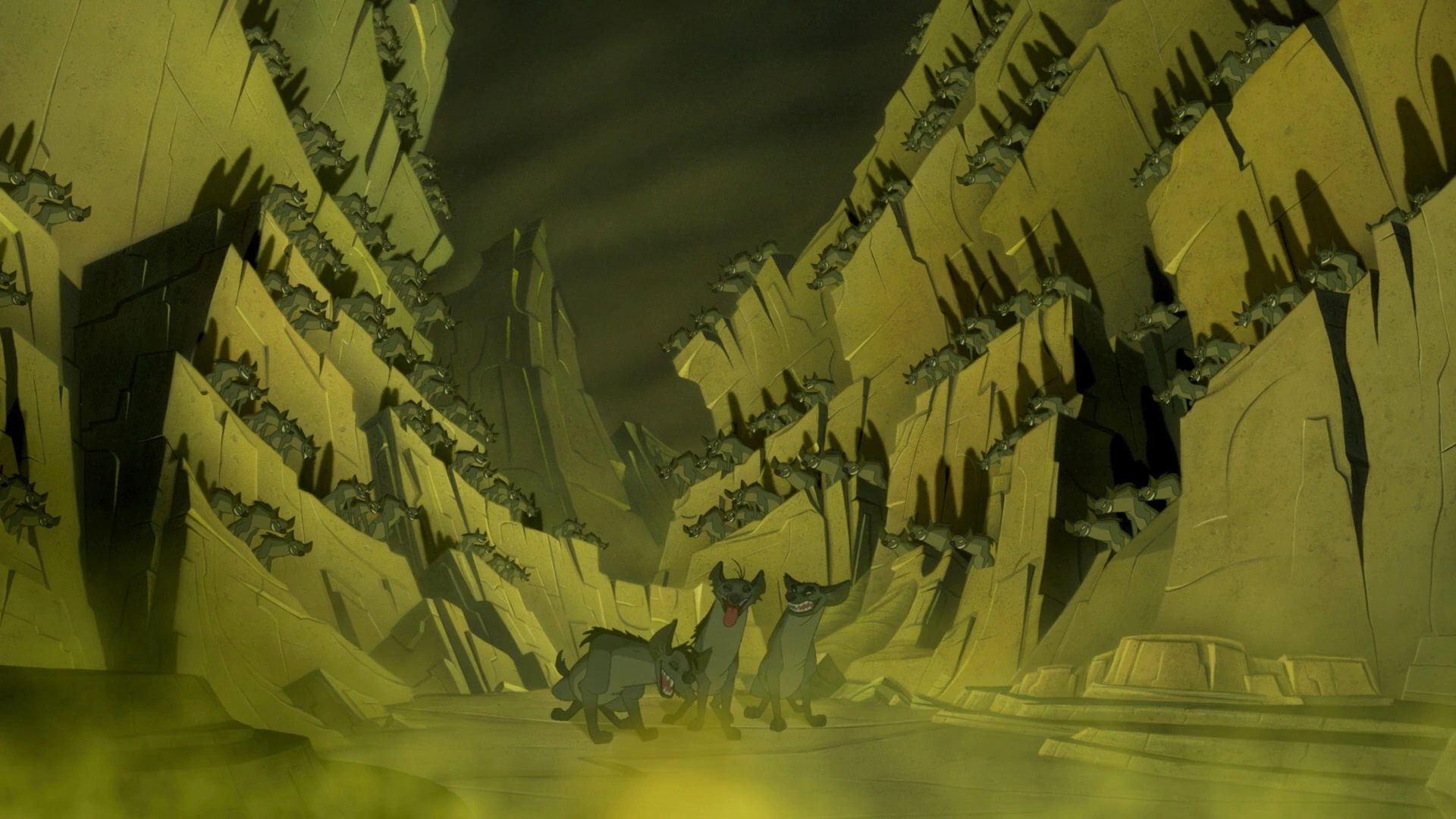When it comes to the clashing arguments of Robert Gooding-Williams and John Morton about Disney’s The Lion King, there’s a clear winner. Gooding-Williams offers an oppositional reading of the movie that constructs a complicated political allegory in which the Pride Land is white, wealthy America and the elephant graveyard and its hyena inhabitants represent the inner city. His evidence coincidental at best, Gooding-Williams fails to convince me that “Disney’s film lets disappear from view the macropolitical and macroeconomic social relations which cut across the boundaries of urban spaces yet contribute substantially to the ongoing reproduction of urban poverty” (378). Responding directly to Gooding-Williams, Morton successfully highlights flaws in Gooding-Williams thinking and proves it to be no more than wishful thinking.
Like many stories, The Lion King has a plot that relies on obviously marked outcasts to drive the conflict. Gooding-Williams claims that the hyenas, who are the outcasts in this instance, are emblematic of people living in America’s inner cities because of way in which Disney marks them as different. The two hyenas with lines in the movie are voiced by Whoopi Goldberg and Cheech Marin, and Gooding-Williams argues that their voices are used “to represent the speech of...hyena characters as black English and Latino slang” (377). He goes on to compare the hyenas’ living quarters to overcrowded housing developments common in inner cities. The way in which the hyenas are vilified by and isolated from the rest of the animals of the Pride Land, he argues, mirrors wealthy and middle class America’s attitude toward its inner cities.
Morton, arguing that Gooding-Williams’ Marxist bias guides and misinforms his theory, responds to Gooding-Williams by focusing on The Lion King’s central conflict between good versus bad and how the inner city allegory doesn’t quite fit. Morton points out that the constant “series of oppositions between good and evil, between light and dark...and between legitimate work and theft” shape the story (314). It requires an obvious villain that fits the dark and evil side of these oppositions, and the hyenas are simply the ones chosen to do so. Morton continues, arguing that Simba’s friendship with Timon and Pumbaa contradicts Gooding-Williams reading of the movie. Like the hyenas, they fall at the bottom of the food chain and are social outcasts. Morton suggests that “through the ‘brotherhood’ struck up by Simba, Timon and Pumbaa, The Lion King strikes an alliance between the productive working class and the legitimate ruling class” (315). This friendship counters the idea that Disney seeks to vilify the lower classes and encourage their isolation.
The Lion King definitely has some problems regarding race, but at the end of the day, Gooding-Williams is too far-fetched in calling it a political allegory for American inner cities.





No comments:
Post a Comment